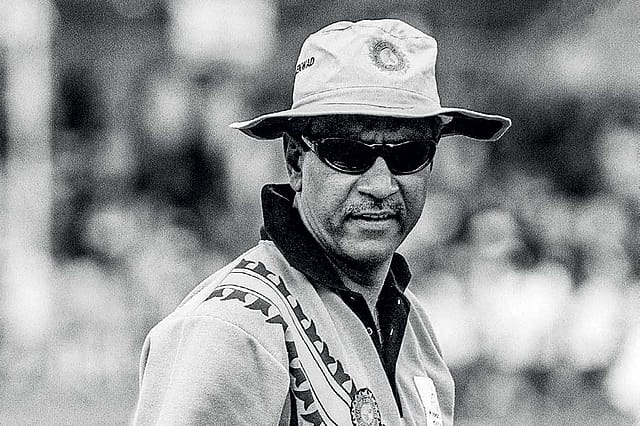Anshuman Gaekwad (1952-2024): Royal Challenger

ANSHUMAN GAEKWAD, born to royalty but one who spent his life as a loyal servant of Indian cricket and wore many hats in that role—fearless batsman, head coach, and national selector—died earlier this week at the age of 71. He was being treated for cancer (towards which the Indian cricket board had released ₹1 crore), first in London and then in Vadodara, his ancestral home, to where he had returned last month. Gaekwad leaves behind a rich legacy.
Cricket was in his blood. A second-generation cricketer (son of Dattajirao Gaekwad, who had captained India on the tour of England in 1959), Anshuman Gaekwad represented India in 40 Test matches and 15 ODIs between 1974 and 1987. Later, he went on to coach the Indian team on two separate occasions between 1997 and 2000, and it was in this capacity that he last served the national team, famously charging the field at the Feroz Shah Kotla in Delhi after Anil Kumble became only the second bowler in Test cricket to claim all 10 wickets in an innings, against Pakistan in 1999.
On August 1, Kumble paid his respect with this post on X: "Deeply saddened to hear about the passing of Aunshu bhai. He was closely associated with my career as a selector, and coach but more importantly always had my back. A kind hearted person with a fierce competitive streak. Our fraternity is going to miss you Aunshubhai."
But Gaekwad was a whole lot more than just a genial father figure in the dressing room. As a batsman, he was known for his mental toughness, often putting his body on the line to confront devastating spells of fast bowling in the '70s. Such was his introduction to international cricket in 1974, when as a 22-year-old debutant, he walked out to bat in Kolkata against the fearsome pace attack of the West Indies at the literal fall of his captain Tiger Pataudi's wicket, who Andy Roberts had bloodied. Without even a helmet to protect his skull, the bespectacled Gaekwad scored 36 courageous runs, putting on a stand worth 75 runs with Gundappa Viswanath.
2025 In Review
12 Dec 2025 - Vol 04 | Issue 51
Words and scenes in retrospect
Great courage was once again on neon-lit display during his first overseas tour to the Caribbean, in 1976. Pushed up the order to open the innings with Gavaskar, a role he would occupy for most of his remaining Tests, Gaekwad faced the wrath of four supremely quick bowlers in Jamaica, who were free to bowl multiple bouncers in an over without facing any penalty. It of course caused mayhem. In a Test that is now infamously known as 'Bloodbath at Kingston', Gaekwad top scored in the first innings with 81 incredible runs before retiring hurt, a deserved hundred stunted only after a Michael Holding bouncer smacked into his ear and pierced his eardrum. The requisite surgery ensured that he could not bat in the second innings, one of five Indians absent due to injuries.
Stodgy openers were not often free-scoring batsmen in his day, so Gaekwad's first hundred finally arrived three years later in Kanpur, also against the West Indies. He would go on to score a double hundred as well, against Pakistan in 1983. In that Test match in Jalandhar, the next best score to Gaekwad's 201 was Roger Binny's 54. Binny, the incumbent BCCI president, said: "Anshuman Gaekwad's passing is a great loss for Indian cricket. His dedication, resilience, and love for the game were unparalleled. He was not just a cricketer but a mentor and a friend to many. The cricketing community will miss him dearly, and his contributions will always be remembered."
In 1984, Gaekwad's Test career ended exactly where it had begun, at the Eden Gardens in Kolkata. Some claim that he was perhaps the best captain India never had. Gaekwad would play a further three ODIs for the country, the last of them in 1987. That short-format career had begun with a debut in the very first World Cup game that India ever played in 1975. And despite playing a total of just 15 ODIs, Gaekwad featured in two World Cups, the editions of 1975 and 1979. Once he retired, he swiftly gravitated towards a coaching role, sharing his deep knowledge of the game with future generations in the latter half of the 1990s.
